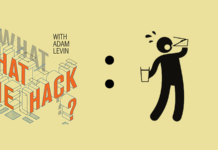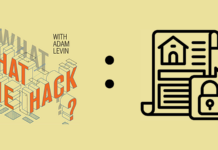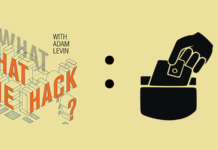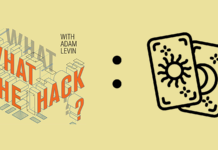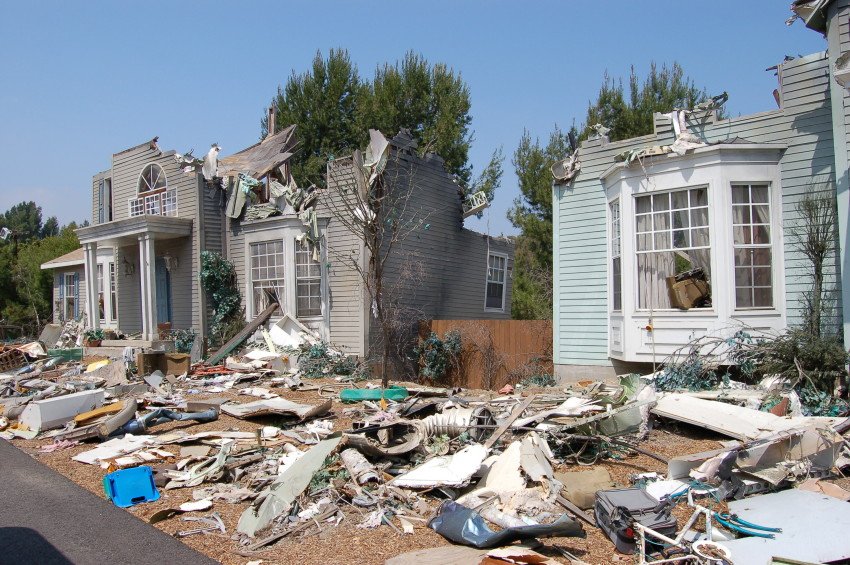

Like millions of Americans, I was hammered by Hurricane Sandy. The home that I own on the New Jersey shore was obliterated by the storm. It is nothing but a pile of rubble. Gone. While I have 30 years of memories, there is nothing left but the memories. It is incredibly painful.
I saw it coming and did the best I could to prepare for it, and yet I could never be fully prepared. I said to myself, “It could be really bad, but it can’t really be that bad. It will never happen to me.” Deep down, I didn’t buy it. I didn’t want to believe. After all, we all know that the media can take a snarly spring shower and turn it into the storm of the century.
Unfortunately, this truly was the storm of the century. The devastation it has wrought is unthinkable, heartbreaking, almost vengeful.
When I look at what I’m feeling now and how far it is from what I would have believed a few days ago, I begin to understand how people think — or don’t think — about identity theft.
It seems that human beings are hard-wired to manage risk badly. If you wanted to sugar-coat it, you could call it a survival skill: without this prodigious talent for self-deception — without this brilliant ability to delude ourselves about danger, reject reality, and embrace denial — we never would have become the inventive, self-sure species we are. We would be meditative, bovine and slow — safe to the point of extinction. Not the evolutionary hockey stick humanity has become.
But the irresistible impulse that propelled us to exceptionalism in one sense can doom us to disaster in another — and so it is with identity theft.
Like it or not, believe it or not, we know when we look at the numbers that at some point in each of our lives, we and the members of our families are likely to become victims of this crime. It might be a credit or debit card compromise. It might be something much bigger: a full-on assumption of our identities or those of our children, complete with parallel careers, home purchases, medical histories, even criminal records — all just waiting to come crashing down on us out of the sky like a wind-whipped torrent.
You might think you’re doing everything right, doing everything you could possibly do to avoid it — and that may well be true. But when that showdown comes despite your best efforts and your deepest beliefs, you will realize that this crime doesn’t follow those rules. You can strip the contents of your wallet down to the barest minimum to reduce your risk, eschewing excess credit and debit cards and exiling your Social Security card forever. You can be as self-protective as Garbo in your online behavior, dream up passwords tougher than an armored car, treat your laptop and mobile phone like potential double agents, and shred sensitive documents like there’s no tomorrow. You should do all these things, and more.
But you should also know that it may not be enough. In fact, it probably won’t be.
The truth is that you can make things better, but life cannot be perfected. You cannot reduce your risk to zero. It’s still worth trying, of course, just as it’s worth looking both ways before you cross the street. But no matter how scrupulously you design your life, you need a Plan B in your back pocket. The alternative is to feel the way I feel right now: devastated and undone. You may get hit, but you don’t have to feel betrayed. Anticipating the punch makes it a whole lot easier to get up again.
Since 2005, nearly 600 million records have been improperly accessed through data breaches caused by hacking, physical file theft, lost unencrypted laptops and back-up devices, negligent posting of personal information by companies and governments and generally Mickey Mouse security protocols, according to Privacy Rights Clearinghouse. Further, in disaster situations like Sandy, oftentimes when homes and vehicles are damaged, destroyed or abandoned, unprotected documents containing sensitive personal information, automobile registrations and credit or debit cards are washed away and become magnets for criminals.
That said, it is imperative to trifurcate this issue:
- Limit your risk of exposure. That means doing everything I mentioned above, and probably a little more. Be smart and systematic to the point of paranoia. Your future self will thank you.
- Enroll in credit and public records monitoring enabling you to detect an attack as quickly as possible so that if you do become a victim, you won’t stay one.
- Have a damage control program in place so you can get back on your feet ASAP.
There are plenty of excellent credit and public records monitoring programs. You can use Credit.com’s free Credit Report Card to get an overview of where you stand, and your free credit scores. And go to Annualcreditreport.com for a free copy of your credit report from each of the three credit reporting agencies. You can also find good, and sometimes free, identity theft monitoring and protection services here and here, and get background on what to look for here. And don’t let your due diligence stop there. Check your bank and credit card accounts each day to see if each transaction listed really is yours. Review every Explanation of Benefits notice your health insurance provider sends you. The same goes for your annual earnings report from the Social Security Administration. And let technology be your friend by enrolling in free transaction notification programs (by phone, text, email — whatever works) at your bank, credit union or credit card company.
Let’s talk for a moment about damage control.
I had flood insurance. But because my insurance agent insisted, I also got excess flood insurance. That took me from a recovery which would have left me almost naked against the storm to full replacement value. Believe me, that “future me” factor is kicking in big-time right now. You, too, can make choices now that you’ll be grateful for later on.
Now, when I talk to people about preparing for the eventuality of identity theft and getting a damage control program in place before disaster hits, they have a hundred reasons for not following my advice. They say it’s too expensive. They say they can do it themselves. Unfortunately, though, they’re setting themselves up for a fall. This crime and its aftermath can be so complex and the lag time in detection can be so great that consumers find themselves in over their heads and desperate for someone with the expertise to help them navigate these tricky waters.
On a relative basis, people can’t afford not to afford solid identity theft protection programs. In absolute terms, the cost may be minimal — or even free — since many insurance companies, smaller banks (the ones without the prefix “mega-“), credit unions, associations, and employers make these programs available to clients, customers, policyholders, employees, and members as a perk of the relationship. Unfortunately, their efforts at socializing the information may not be effective or people may not be paying attention to those notices. I think of the poor souls who wouldn’t evacuate, even after repeated warning from Mayor Bloomberg and Governors Christie and Cuomo.
You don’t have to take my word for it, but maybe you should. Like it or not, believe it or not, bad things do happen. Mother Nature loves us. But she doesn’t provide apologies, and it doesn’t do any good to ask for them. Far better to have that Plan B where you can reach it easily. We’ll all get up again and make life better, because that’s who we are and what we do. But don’t make things tougher than they need to be. As we have learned yet again, oftentimes our worst fears are realized. Be ready. A little preview of reality can go a long way.
This article originally appeared on Credit.com. Follow them on Twitter and Facebook.





